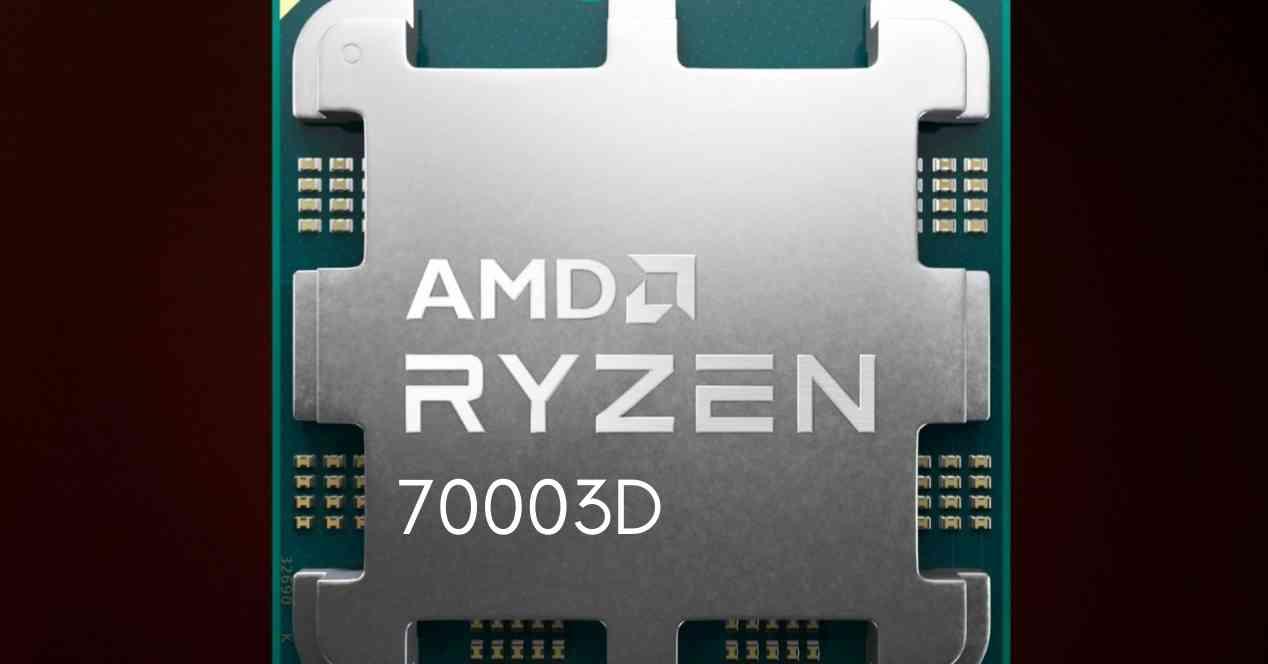The war between Intel and AMD will intensify in the coming months with the launch of the thirteenth generation Core processors and the Ryzen 7000. However, Lisa Su’s company is preparing a vitaminized version of its next processors. Who will combine the V-Cache with the Zen 4 architecture. Well, we can finally know the performance that the future could have Ryzen 7000 3Das well as its potential release date.
AMD’s V-Cache technology extends the processor’s last-level cache capacity by placing an SRAM memory chip above the processor and interconnecting vertically with the chips that contain the processor’s cores and cache. This improves processor performance by increasing the chances of data being inside the processor and thus reducing data access time. The consequences of this? A huge improvement in CPU performance, since instructions take less time to execute and therefore programs run faster.
30% more performance on Ryzen 7000 3D with V-Cache
The best AMD processor today, in terms of power per core, is the Ryzen 7 5800X3D, the reason for this is the inclusion of V-Cache which increases its performance by an average of 15% compared to the original version of the processor. This brings the performance of said processor closer to that of the upcoming Ryzen 7000 with Zen 4 architecture. Well, we know from a roadmap from Lisa Su’s own company that we’re going to see repeated the same move with the Ryzen 7000 3D.
The question is though, will we see a performance boost of the same caliber? For now, the few leaks talk about an improved V-Cache, which will continue to be manufactured under TSMC’s 7nm node, but will allow higher clock speeds. All this in performance will result in a 30% improvement over conventional models.. To all this we must add that in the list of Ryzen 7000 processors, the 7800X was not seen, but the 7700X. Does AMD reserve its version with vertical cache? Who knows.
As for the release date, don’t expect it before April 2023. Either way, we can’t wait to see which brand comes out on top when it comes to performance. Since the one that achieves the best results in the various games will be the one that will attract all the attention of a market as demanding as PC gaming.
AMD and ASUS will implement the Dynamic OC Switcher
And to finish and totally change the third, AMD socket AM5 motherboards will incorporate some improvements in terms of overclocking. That yes, at the moment we will only see this on some ASUS motherboards and we cannot guarantee that it will appear on those of other brands, but since it is a feature implemented from the chipset, it it is possible that its adoption will be majority. Although, on the other hand, we don’t think we’ll see them in cheap models, as it’s a feature that games will benefit from first and foremost.
What is? Well, in the possibility of disabling processor multithreading to increase the clock speed of each core. Keep in mind that the vast majority of games today fail to take advantage of more than 8 CPU threads and as a result many of them are theoretically left idle with nothing to do. And with that, we increase the available power per process. Thus, in games that already have some experience or that require few cores, they will see an improvement, especially those of Electronic Sports. Which was dubbed by ASUS and AMD as Dynamic OC switch.










